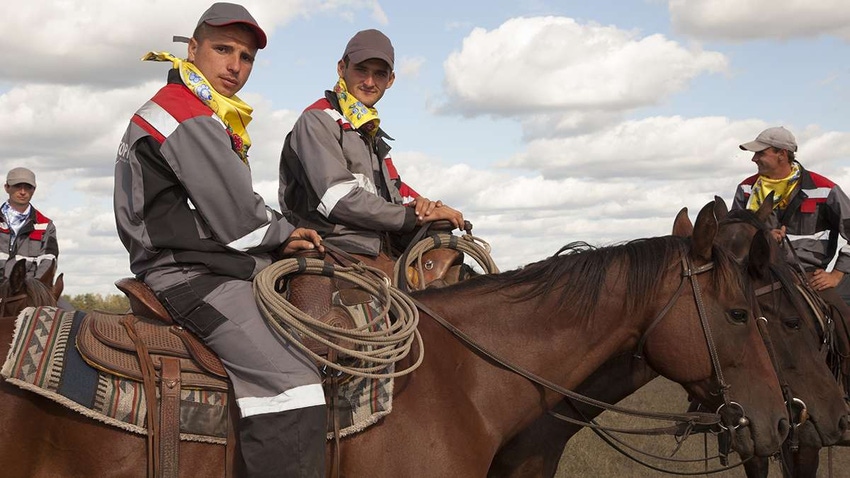November 28, 2016

Out on the range, a lone cowboy enjoys the solace of the fresh air, the view of the rugged terrain and his cattle grazing peacefully on land that has been in his family for generations. He’s a humble man, but he’s prideful, too.
He’s proud of his heritage and the legacy he will pass onto his children. He’s proud of the genetics he has built up in his herd. And he’s proud of the blood, sweat and tears he’s put into his place. There’s nothing quite like being your own boss and living independently, with dreams and ambitions driving you to succeed.
To me, that embodies the American cowboy. The world has long romanticized the mysterious western man. With features shadowed under a broad cowboy hat, the American cowboy represents freedom, independence and adventure that people around the globe have adored for generations.
While many American consumers seem to have lost touch with the silent American cowboy community, halfway around the globe, Russians are trying to emulate exactly what makes the hard-working American cowboy so great.
Irina Zhorov for The Pulse recently wrote an article describing the booming growth of the Russian beef industry. Essentially owned by one company, Miratorg, Russia hopes to scale its beef production to become a global competitor. In just a few years, fallowed fields were reclaimed and replanted with grass. The cow herd grew to 400,000. And American cowboys traveled abroad to teach Russians how to “cowboy up,” — American style.
According to the article, “Miratorg is single-handedly trying to create an American-style beef industry, but in a very condensed time period. It now has about 400,000 cows, the largest herd in the world. The company has had to build fences in a country without any, to train veterinarians, and to also import everything from horses and grass seed to tractors. But the hardest part of managing this immense operation is not the science or the planning. It’s finding workers. Cowboys. So the company imported some of them, too.”
Zhorov shares the story of one Montana cowboy, Shawn Weekes, who has spent the last two years in Russia working for Miratog and is responsible for training new workers the cowboy way.
“Miratorg now employs 1,000 Russian cowboys, though they call them ‘operators.’ Weekes says it’s been hard translating cowboy work ethic and skills to the operators. He's had a hard time convincing operators to start work early, before the heat, to stay until the job is done, to follow his instructions. Once, some operators showed up on bikes, instead of horses, to move a herd. So he teaches the operators to ride horses, to use a lasso, to doctor calves, but also to accept the long work hours, the can-do attitude of a dedicated cowman, and the love for the animals.”
You can read the entire article here and see how one company is working to create a beef system that will rival the U.S. However, there’s one thing Miratog will never achieve for the Russian people that we enjoy here — the independent spirit of the self-employed American cowboy.
It’s that independence we in the U.S. beef industry must fight hard to protect. And it may not be so easy. Think about the number of feedlots going out of business. How about the number of young people who have been forced out of production agriculture and into urban communities in order to make ends meet? What about the small rural communities that are struggling to keep their schools, stores and churches open as people move away from these areas? These are all compounding factors in the dying breed of independent cowboys in the U.S.
We’ve seen the consolidation of pork and poultry industries. Is the U.S. beef industry next? Soon will the major packers hold majority control of the feeder, then the stocker, then the backgrounder and finally, the cow-calf operator? Could we one day be “owned” by one entity and simply be employees of the U.S. beef industry?
It may sound like a stretch, but murmurs around sale barns and cattlemen’s meetings I’ve attended recently have hinted at those fears. We must ask ourselves what must be done to ensure the individuality and entrepreneurial spirit of the American cowboy. If we don’t, I fear that as Russia tries to emulate us, we’ll someday be forced into the corporate Russian beef production model.
The opinions of Amanda Radke are not necessarily those of beefmagazine.com or Penton Agriculture.
You May Also Like



